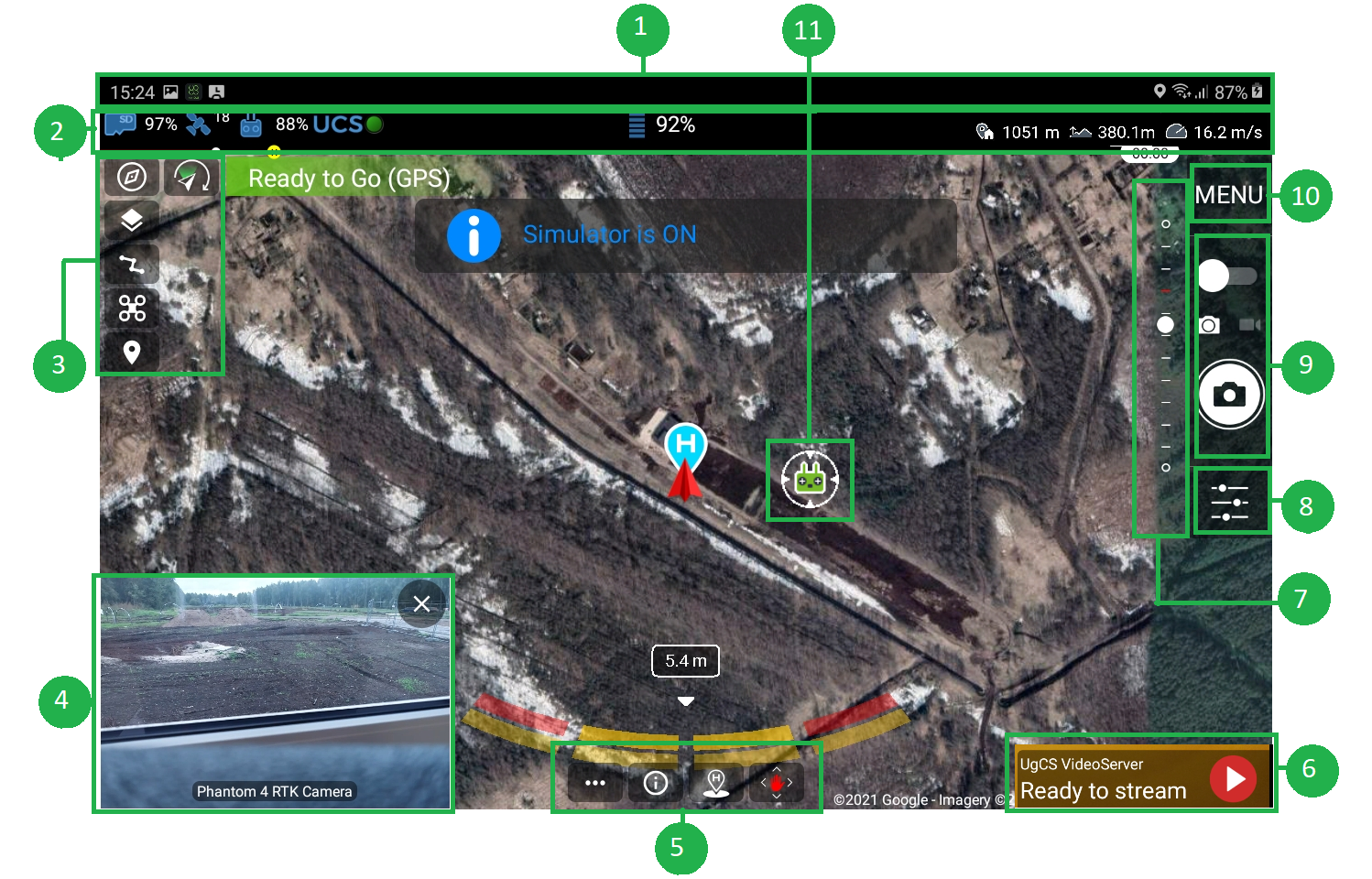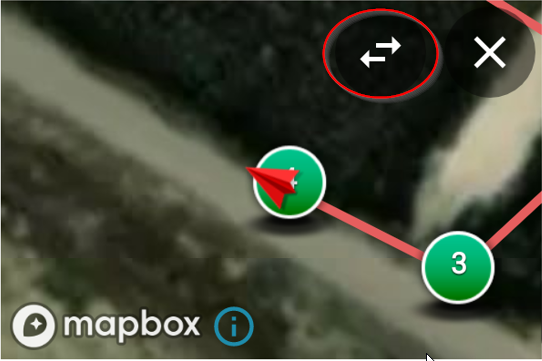Main screen
The Main application screen has a live video preview in the background. Live video stream is available at UgCS Desktop client after enabling Live stream.
*Video streaming function is only available for UgCS Enterprise. More details can be found at https://shop.ugcs.com/pages/ugcs-license-types-pricing

Note: Turn on the GPS module on an Android device for the location of RC to be displayed in UgCS for the desktop.
The main application screen can be divided into these zones:
1 System bar,
2 Application status bar,
3 Vehicle control bar,
4 Live video preview,
5 Vehicle control bar,
6 Live stream button,
7 Camera zoom,
8 Camera settings,
9 Payload control,
10 MENU,
11 Live RC (pilot) location
System bar (1) displays the standard Android device bar. Usually, this part of the screen includes network connection status (Wi-Fi, 3G/LTE, etc.), device battery level, and clock.
Application status bar (2)

a. SD card free memory percentage.
b. GPS/RTK status:

RTK disabled, the satellite icon with satellite count is displayed.

RTK enabled, base station not connected.

RTK enabled, base station connected, RTK data not used.

RTK enabled, RTK data is used for positioning (RTK FIX)
To view detailed information, tap on the icon.

c. Range extender or remote control battery percentage.
d. Connection status indicator between UCS and UgCS for DJI.
The connection allows mission upload, vehicle control from UgCS, and telemetry recording.
e. Drone battery percentage.
f. Distance to the home position.
The indicator displays distance projected to the ground, not actual (vertical + horizontal) distance.
g. Altitude above ground.
h. Drone speed (airspeed).
Vehicle control panel (3, 5) button functions:
Open Route - displays a list of routes that have been uploaded from the UgCS desktop. Select a route from the list for the flight.
Upload Route - upload a route from UgCS for DJI to the drone’s autopilot, allowing the drone to fly in auto-mode.
Choose Map Type – to choose which map type should be used for this flight. Maps will be uploaded from the UgCS desktop.

Live video preview (4) displays a video stream from a drone camera. Tap the live video preview screen to swap it with the map view.
To change the preview source (payload or FPV) tap on the arrows button.

To minimize the preview screen, tap the upper-right-corner X icon. To restore the preview screen – tap the restore icon in the bottom left corner.

Live stream (6) Enable live stream, to display the video stream in the UgCS desktop client. *Video streaming function is only available for UgCS Enterprise. More details can be found here.
Note: Some windows which can’t be closed by the X button, can be swiped to the side of the screen
Camera zoom and autofocus (7) Tap and gold T to zoom in, W to zoom out. Tap and hold R for autofocus. The Zoom settings of UgCS are limited by the optical zoom range of a particular camera.
The camera position control panel (8) blue dot indicator displays the current position of the camera. To control the camera position on the touchscreen, move your finger up or down, to left or right (works for payloads with supported yaw control). Invert camera controls in the Settings of the Main menu.
Camera settings (9) various camera parameters can be configured. Tap to set the ISO, shutter, and exposure values of the camera.
Payload control (10) functions: switch between photo or video mode; make a shot or start/stop video recording.
Menu (11) button navigates to the camera setting menu to define photo camera mode: single photo, multiple photos, continuous photo capturing (continuous photo mode may not work for Inspire 1).
Flat-field correction is a technique used to improve quality in digital imaging.
Automatic - correction is performed automatically during operation
Manual - to perform correction click the “FFC” button.
Support the following cameras: XT2, M2EA, M2E Duo, and H20T.
Note: due to the different technical approaches of Z30, it is not possible to see the correct zoom values in UgCS for DJI - for now, the workaround to use this functionality is to find the desired zoom value empirically.
Updated 5 months ago
